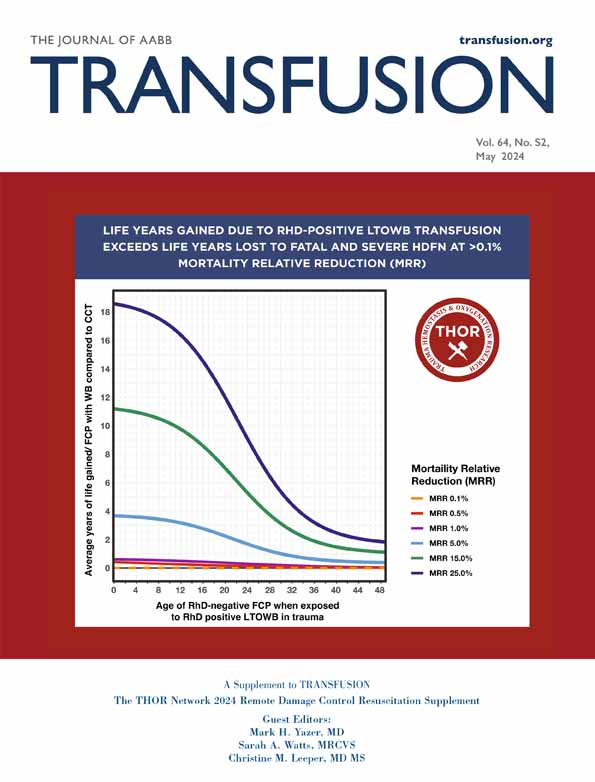Blood consumption in the Role 2 setting: A Department of Defense Trauma Registry analysis
The views expressed in this article are those of the authors and do not reflect the official policy or position of the US Army Medical Department, Department of the Army, Department of Defense, or the US Government.
Abstract
Background
The Role 2 setting represents the most far-forward military treatment facility with limited surgical and holding capabilities. There are limited data to guide recommendations on blood product utilization at the Role 2. We describe the consumption of blood products in this setting.
Study Design and Methods
We analyzed data from 2007 to 2023 from the Department of Defense Trauma Registry (DODTR) that received care at a Role 2. We used descriptive and inferential statistics to characterize the volumes of blood products consumed in this setting. We also performed a secondary analysis of US military, Coalition, and US contractor personnel.
Results
Within our initial cohort analysis of 15,581 encounters, 17% (2636) received at least one unit of PRBCs or whole blood, of which 11% received a submassive transfusion, 4% received a massive transfusion, and 1% received a supermassive transfusion. There were 6402 encounters that met inclusion for our secondary analysis. With this group, 5% received a submassive transfusion, 2% received a massive transfusion, and 1% received a supermassive transfusion.
Conclusions
We described volumes of blood products consumed at the Role 2 during recent conflicts. The maximum number of units consumed among survivors exceeds currently recommended available blood supply. Our findings suggest that rapid resupply and cold-stored chain demands may be higher than anticipated in future conflicts.
CONFLICT OF INTEREST STATEMENT
The authors have disclosed no conflicts of interest.




